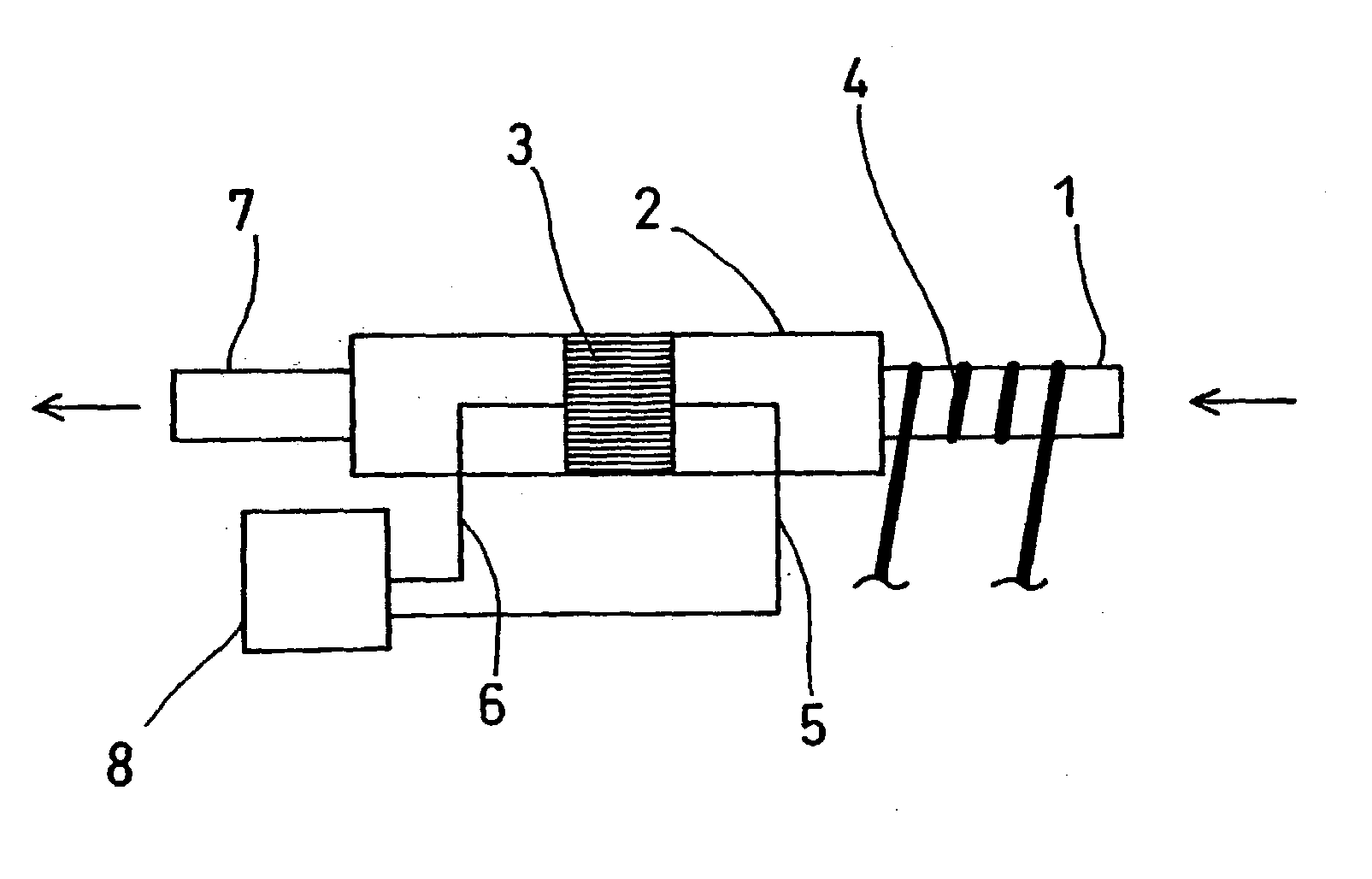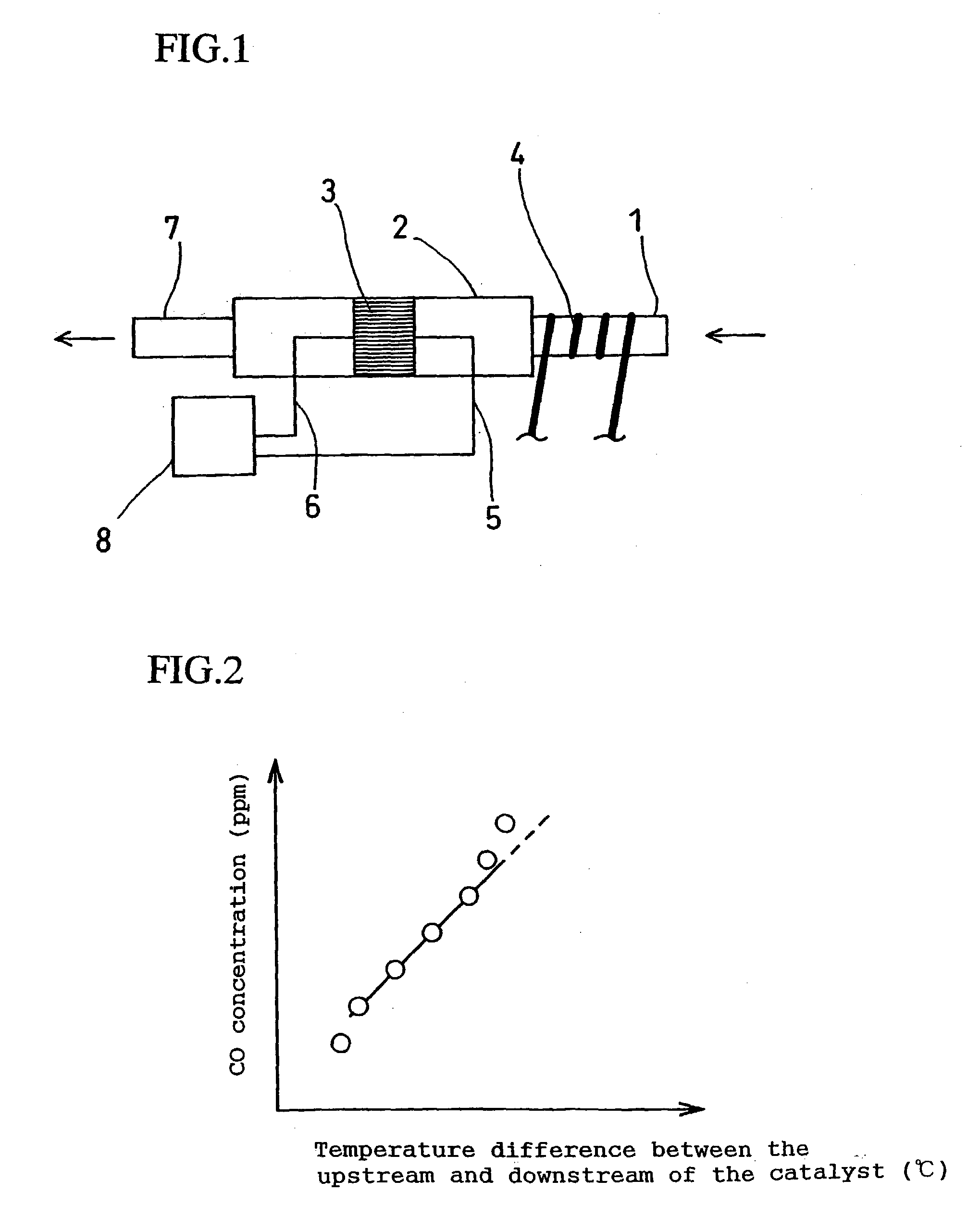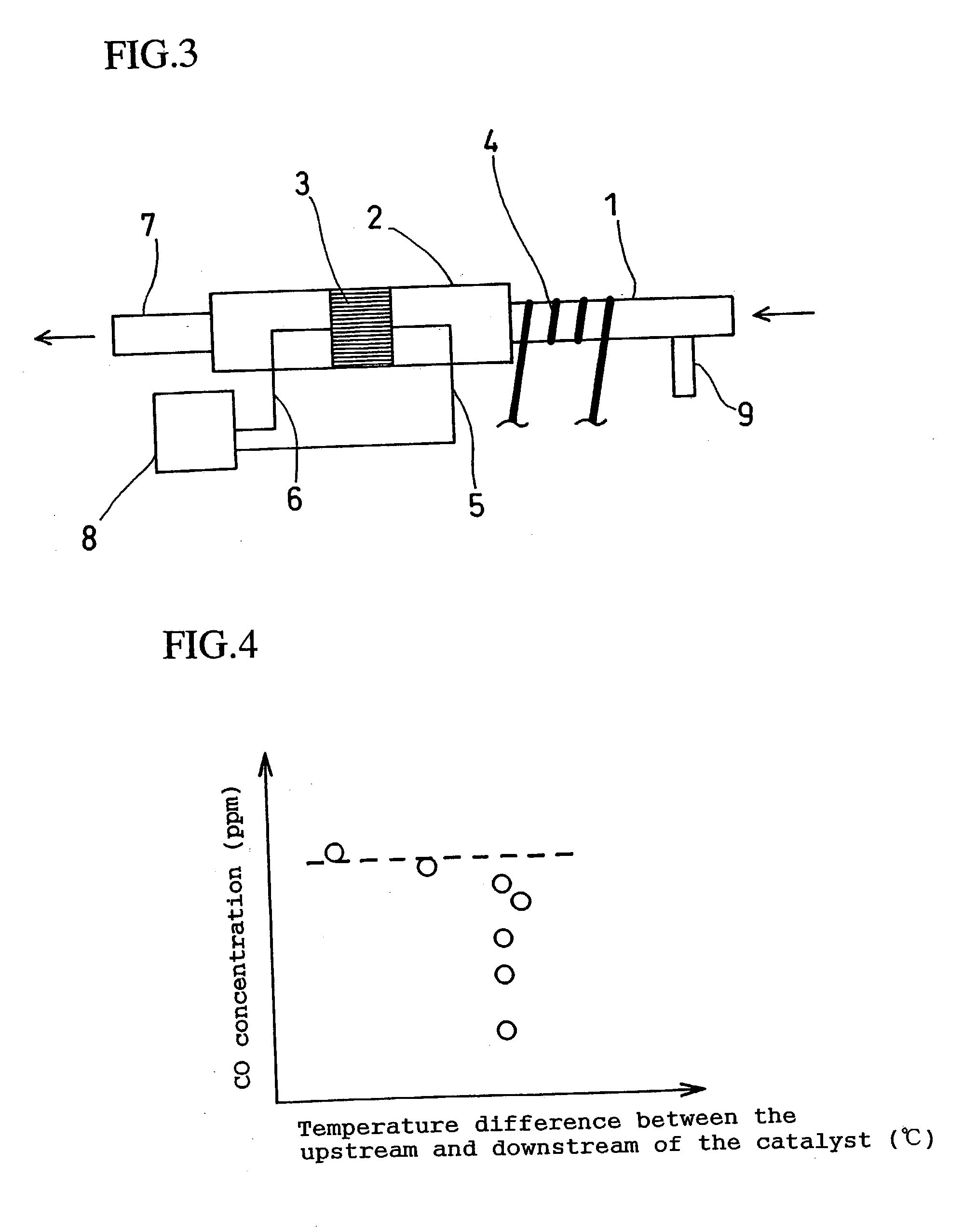Gas concentration sensor, hydrogen purification unit using this and fuel cell system
a technology of gas concentration sensor and hydrogen purification unit, which is applied in the direction of instruments, material heat development, specific gravity measurement, etc., can solve the problems of high cost, difficult to achieve, and poisoning of co in the reformed gas of the pt catalyst used in the electrodes
- Summary
- Abstract
- Description
- Claims
- Application Information
AI Technical Summary
Benefits of technology
Problems solved by technology
Method used
Image
Examples
embodiment 1
[0024] In the following, Embodiment 1 of the present invention will be described with reference to the drawings:
[0025] FIG. 1 is a schematic view showing a configuration of a gas concentration detector in accordance with Embodiment 1 of the present invention. In FIG. 1, a reformed gas supplied from a reformed gas inlet 1 (a gas containing at least hydrogen and carbon monoxide) is sent out to a reaction chamber 2, reacts in a catalyst layer 3 and is then discharged from out of a reformed gas outlet 7. A temperature upstream from the catalyst layer and a temperature downstream therefrom are measured on a first thermocouple 5 which is a first temperature detector and on a second thermocouple 6 which is a second temperature detector, respectively. Signals from these thermocouples are sent to a signal treatment device 8, to be output as a CO concentration.
[0026] Further, a heater 4 keeps the reaction chamber 2 at a constant temperature. Herein, a case of a reformed gas obtained when a na...
embodiment 2
[0047] Next, Embodiment 2 of the present invention will be described with reference to the drawings:
[0048] FIG. 3 is a schematic view showing a configuration of a gas concentration detector in accordance with Embodiment 2 of the present invention. In FIG. 3, a reformed gas supplied from a reformed gas inlet 1 is sent out to a reaction chamber 2, reacts in a catalyst layer 3 and is then discharged from out of a reformed gas outlet 7. A temperature upstream from the catalyst layer and a temperature downstream therefrom are measured on a first thermocouple 5 which is a first temperature detector and on a second thermocouple 6 which is a second temperature detector, respectively. Signals from these thermocouples are sent to a signal treatment device 8, to be output as a CO concentration.
[0049] Further, a heater 4 keeps the reaction chamber 2 at a constant temperature. A air supply unit 9 is arranged on the upstream side of the reaction chamber 2. In the present embodiment, a case of a r...
example 1
[0066] The reaction chamber 2 in the gas concentration detector shown in FIG. 1 was filled with a catalyst which is an almina pellet having a diameter of 1 mm and a length of 1 mm with 5% by weight of Ru carried thereon. A reformed gas composed of 20% by volume of carbon dioxide and the remaining t by volume of hydrogen was supplied from the reformed gas inlet at a flow rate of 0.1 liter per minute and the temperature of the first thermocouple was controlled to be 150.degree. C. in the heater 4. A reformed gas, mixed with CO such that the CO concentrations in the reformed gas were 5 ppm, 20 ppm, 100 ppm, 500 ppm, 900 ppm, 1200 ppm and 2000 ppm, was supplied and the temperatures of the first thermocouple and the second thermocouple were measured. The results of measurements of the CO concentrations (ppm) as well as the temperature differences between the upstream and the downstream (.degree. C.) were shown in Table 1.
1 TABLE 1 Temperature difference CO concentration between upstream / ...
PUM
| Property | Measurement | Unit |
|---|---|---|
| temperatures | aaaaa | aaaaa |
| temperatures | aaaaa | aaaaa |
| temperatures | aaaaa | aaaaa |
Abstract
Description
Claims
Application Information
 Login to View More
Login to View More - R&D
- Intellectual Property
- Life Sciences
- Materials
- Tech Scout
- Unparalleled Data Quality
- Higher Quality Content
- 60% Fewer Hallucinations
Browse by: Latest US Patents, China's latest patents, Technical Efficacy Thesaurus, Application Domain, Technology Topic, Popular Technical Reports.
© 2025 PatSnap. All rights reserved.Legal|Privacy policy|Modern Slavery Act Transparency Statement|Sitemap|About US| Contact US: help@patsnap.com



